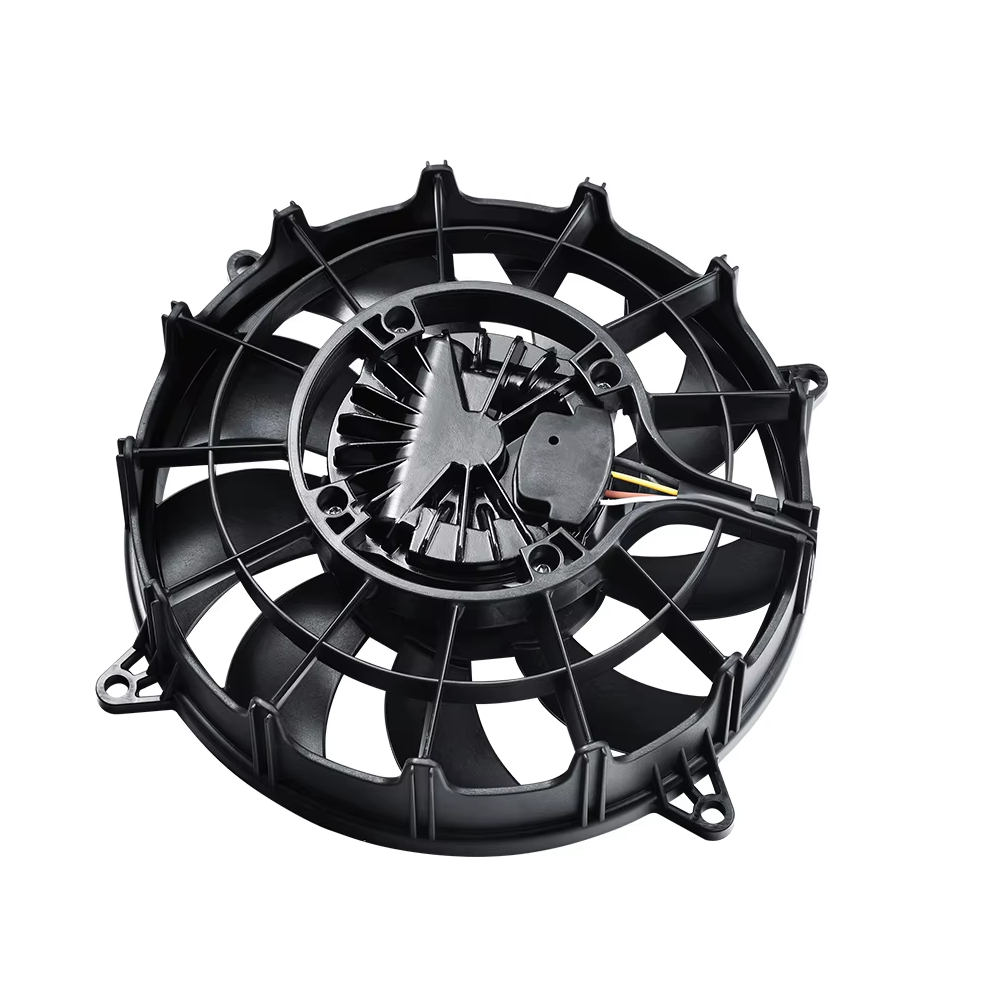Axial fan motors. You might not think about them much, but they’re the unsung heroes keeping a ton of industries running smoothly. Forget those clunky, inefficient fans of the past. We’re talking about precision-engineered OEM axial fan motors, specifically those operating in the 500-3000 RPM range and, critically, equipped with thermal overload protection. Let’s dive into why these motors are becoming increasingly vital, and how they are currently changing everything.
Why OEM Matters: Customization is King
First off, let’s tackle “OEM.” Original Equipment Manufacturer. In this context, it means these axial fan motors are designed and built to be integrated directly into another company’s product. Forget off-the-shelf solutions that only almost fit. OEM allows for total customization. Need a specific mounting configuration? Check. Ultra-quiet operation? Done. Designed to withstand harsh environments? Absolutely.
This level of customization is a game-changer. Instead of forcing your product design to accommodate a generic fan motor, you get a motor precisely tailored to your needs. That means better performance, increased efficiency, and potentially a longer lifespan for your overall system.
The 500-3000 RPM range is a sweet spot for many applications. It provides a good balance between airflow and noise levels. The ability to fine-tune the speed within this range allows engineers to optimize cooling performance for different operating conditions. Imagine a server rack that automatically ramps up fan speed when the CPUs are under heavy load and then dials it back down when things cool off. That’s the kind of smart, efficient cooling that OEM axial fan motors make possible.
But the real star of the show is the thermal overload protection. This is crucial. Axial fan motors, like any electrical device, can overheat if they’re pushed too hard or if there’s a malfunction. Without thermal overload protection, that overheating can lead to motor failure, damage to surrounding components, and even fire hazards. Thermal overload protection acts as a built-in safety net, automatically shutting down the motor if it detects excessive heat. This prevents catastrophic failures and keeps your equipment (and your customers) safe.
Real-World Impact: From Data Centers to EVs
So, where are these OEM axial fan motors making the biggest impact? Everywhere!
Data Centers: These power-hungry facilities generate massive amounts of heat. Efficient cooling is essential to prevent downtime and maintain optimal performance. OEM axial fan motors with thermal overload protection are used extensively in server racks, cooling units, and other critical infrastructure. Right now, a lot of data centers are upgrading their cooling systems with these fans to cope with the increasing demands of AI and machine learning workloads. The thermal overload protection is particularly important in these environments where even a brief shutdown can have huge consequences.
Electric Vehicles (EVs): EVs are rapidly gaining popularity, and thermal management is a key challenge. Batteries, motors, and power electronics generate significant heat. OEM axial fan motors are used to cool these components, ensuring optimal performance and extending battery life. The demand for high-performance, reliable cooling solutions in EVs is only going to increase as battery technology advances and charging speeds get faster.
Industrial Equipment: From manufacturing robots to HVAC systems, industrial equipment often operates in harsh environments with high temperatures and heavy loads. OEM axial fan motors with thermal overload protection are essential for keeping these systems running reliably and preventing costly downtime. Think about a CNC machine constantly cutting metal – the motor needs to stay cool under pressure.
Medical Devices: Many medical devices, such as MRI machines and CT scanners, generate a lot of heat and require precise temperature control. OEM axial fan motors play a vital role in keeping these devices running safely and accurately.
Renewable Energy: Wind turbines and solar inverters also rely on efficient cooling systems. OEM axial fan motors help to dissipate heat and ensure optimal performance of these renewable energy technologies. As the world transitions to cleaner energy sources, the demand for these motors will continue to grow.
Home Appliances: You might be surprised, but many high-end appliances, like refrigerators and ovens, use small axial fan motors to circulate air and improve cooling efficiency. OEM options allow manufacturers to optimize performance and reduce noise levels.
To highlight how integral these fans are, let’s look at the growth of Data Centers worldwide. The thermal management market, which includes axial fans, is projected to reach $25 billion by 2028, driven largely by the expansion of data centers and the increasing demand for cooling in high-performance computing applications. This showcases not only a growth area but also the need for reliable thermal management solutions.
Spec Talk: Picking the Right Motor for the Job
Choosing the right OEM axial fan motor involves a few key considerations:
Airflow Requirements: How much air needs to be moved to effectively cool the target components? This is typically measured in CFM (cubic feet per minute).
Static Pressure: How much resistance will the fan encounter as it moves air through the system? This is typically measured in inches of water gauge.
Noise Level: How much noise is acceptable for the application? This is typically measured in decibels (dB).
Operating Voltage: What voltage is required to power the motor? Common options include 12V, 24V, and 48V DC, as well as 115V and 230V AC.
Environmental Conditions: What are the operating temperature and humidity ranges? Will the motor be exposed to dust, moisture, or other contaminants?
Mounting Configuration: How will the motor be mounted in the system? Different mounting options are available, such as flange mounts, bracket mounts, and stud mounts.
Thermal Overload Protection Type: What type of thermal overload protection is required? Common options include automatic reset and manual reset. Automatic reset automatically restarts the motor after it cools down, while manual reset requires manual intervention.
Motor Life Expectancy: How long should the motor last? This is typically measured in hours of operation. Many high-quality OEM axial fan motors are designed to last for tens of thousands of hours.
It’s also worth considering energy efficiency. Look for motors with features like electronically commutated (EC) motors, which are more efficient than traditional AC motors. Also, explore options for variable speed control. This allows you to adjust the fan speed based on the cooling needs, saving energy and reducing noise levels when full cooling power isn’t required.
Here’s a quick look at some hypothetical fan specs:
| Specification | Fan A | Fan B | Fan C |
|---|---|---|---|
| Airflow (CFM) | 100 | 200 | 300 |
| Static Pressure (in H₂O) | 0.2 | 0.4 | 0.6 |
| Noise Level (dB) | 30 | 40 | 50 |
| Voltage (VDC) | 12 | 24 | 48 |
| Motor Type | Brushless DC | Brushless DC | EC |
| Thermal Protection | Auto Reset | Manual Reset | Auto Reset |
| Life Expectancy (Hours) | 50,000 | 75,000 | 100,000 |
Quick Q&A: Your Burning Questions Answered
Here are some frequently asked questions I often get asked about OEM Axial Fan Motors:
Q: What’s the difference between an AC and a DC axial fan motor?
A: AC (Alternating Current) motors are typically less expensive but less efficient than DC (Direct Current) motors. DC motors, especially brushless DC motors, offer better speed control, higher efficiency, and longer lifespan. EC motors, a type of brushless DC motor, are even more efficient.
Q: How do I choose the right size axial fan motor for my application?
A: Calculate the required airflow (CFM) based on the heat load of the components you need to cool. Then, consider the static pressure of the system. Choose a motor that can deliver the required airflow at the necessary static pressure while staying within acceptable noise level limits. It’s usually better to slightly over-spec than under-spec.
Q: What does “thermal overload protection” actually do?
A: It’s a built-in safety feature that prevents the motor from overheating. If the motor gets too hot, the thermal overload protection will automatically shut it off. This prevents damage to the motor and surrounding components and reduces the risk of fire. Once the motor cools down, it will either automatically restart (auto reset) or require manual intervention (manual reset), depending on the type of protection.
Q: Can I control the speed of an axial fan motor?
A: Yes! Many modern axial fan motors, especially DC and EC motors, can be controlled using PWM (Pulse Width Modulation) signals or analog voltage signals. This allows you to adjust the fan speed based on the cooling needs, saving energy and reducing noise.
Q: Are OEM axial fan motors more expensive than standard off-the-shelf fans?
A: They can be, but not always. While the initial cost might be higher due to the customization, the improved performance, efficiency, and reliability can often lead to lower overall costs in the long run. Plus, having a motor perfectly tailored to your application can save you time and money in design and integration. It’s really about optimizing the value for your specific needs.



